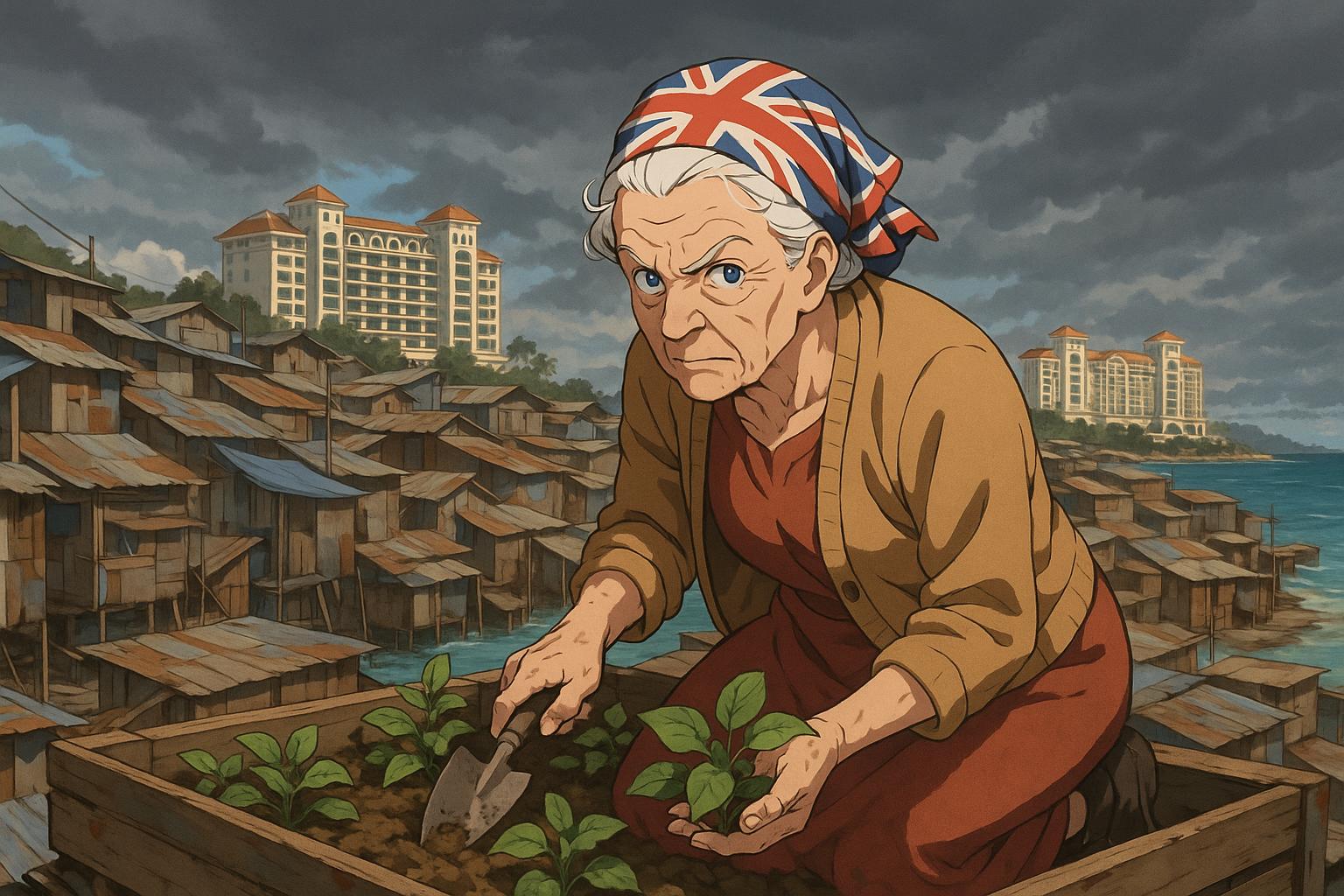In the shadow of luxury resorts in Costa Adeje, Tenerife, a disparate community of British and European expatriates has found itself in a precarious situation. Once envisioning a dream life under the sun, many now reside in makeshift homes, referred to locally as a ‘shanty town’—a designation they themselves reject. The ongoing socioeconomic upheaval, exacerbated by the pandemic and a surge in short-term rental properties, has resulted in a dire housing crisis. Over 20,000 Airbnb-style rentals now populate the island, drastically inflating rental prices and leaving many with scarce affordable housing options.
As they navigate the complexities of life in this unusual settlement, residents reflect on their journeys. Among them is Sharon, a 63-year-old British mother who moved to Spain 17 years ago. Originally settling in Mijas, she relocated to Tenerife in pursuit of better opportunities, only to face a series of misfortunes during the Covid-19 lockdown. Her story is a common thread among the encampment's occupants: financial instability and a lack of affordable housing have driven them to seek refuge in the makeshift community. Sharon, whose home was constructed from salvaged materials, now inspires those around her through herbal medicine and sustainable gardening, asserting, “This place is not a s***hole like many people believe; we respect the land.”
The encampment is located perilously close to the site of the Cuna del Alma project, a highly contested luxury resort that promises to transform the landscape. Critics argue that this development threatens both the environment and local livelihoods, as it is set to encroach upon pristine natural areas. The push for construction, reportedly backed by Belgian investors, has ignited fierce protests from environmental activists and residents alike, who fear for the future of their homes. In a climate of escalating tensions, four excavators were set ablaze in a protest action earlier this year, adding fuel to an already volatile situation.
Despite its technical illegality, the encampment has continued to exist, as authorities currently seem to overlook the settlements as long as they remain trouble-free. Residents have formed an organic community, even establishing their own governance arrangements to address shared concerns and needs. Sharon relays that, in spite of her precarious living situation, there is a sense of solidarity amid the chaos. “I do feel a bit more stable here,” she notes, though the spectre of displacement remains ever-present, particularly with ongoing construction threatening their land.
Beyond Sharon's story, the encampment reflects a growing trend across Tenerife, where numerous alternative living spaces emerge as traditional housing becomes increasingly unaffordable. Neighbour José Damian, a construction worker, echoes the frustrations felt by many as he struggles to find work that compensates adequately for rising rents. The residents collectively point to Airbnb and similar platforms as critical factors in the escalation of housing costs, a sentiment echoed across various island communities. Where convenience and leisure once promised prosperity for many, the unintended consequences now paint a conflicting picture.
Further compounding the challenges faced by locals, the Cuna del Alma development has attracted scrutiny for alleged breaches of environmental regulations, including significant damage to archaeological sites. In May, the Canary Islands Government imposed substantial fines on the project after damaging remains from pre-Hispanic times, signifying the potential risks posed not only to local ecosystems but also to the cultural heritage of the region. Concerns have escalated to the European Commission, which is now investigating potential legal violations.
In this tumultuous landscape, the residents of Costa Adeje's encampments remain defiant. Their collective existence symbolizes a refusal to accept the profound inequalities exacerbated by tourism and the subsequent housing crises. With every protest, every communal decision made within their mini-villages, they are not merely surviving—they are pushing back against an overwhelming tide, nurturing environments of resilience in a community that has been told they do not belong.
The situation continues to evolve as developers press ahead with plans for increasingly extravagant resorts, prompting urgent calls for more responsible tourism practices that prioritise the needs of both the environment and vulnerable local populations.
Reference Map:
- Paragraph 1 – [1], [3]
- Paragraph 2 – [1], [2], [6]
- Paragraph 3 – [5], [4]
- Paragraph 4 – [3], [4]
- Paragraph 5 – [1], [5], [3]
- Paragraph 6 – [3], [5]
- Paragraph 7 – [2], [6]
Source: Noah Wire Services
